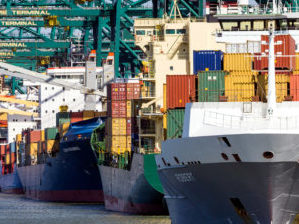In a third STM concept note by Mikael Lind and others, involved in developing improved processes for port operations, an argument is put forward for looking at the whole port environment over a period rather than at just one port call and then looking for the points of improvement.
Port CDM is a fairly new concept being developed from the aviation sector that aims to create improvements in cargo flows in ports and in/off vessels.
The challenges identified in the second concept note published in Fathom-News last week, were that in order for port coordination to be as effective as possible for the benefit of as many actors as possible, some of the necessary parts of an action of information chain may have to work sub-optimally. While this argument applies for an individual port call, it would also apply for the port as a whole over a period of time.
Ship operators are accustomed to traditional port arrival processes, including arrival at the end of passage point under a charter party agreement, steaming to a pilot pick up point or an anchorage Lind and the other authors argue that a port and its independent parties have a system of production for fulfilling its most important tasks, stating “where a system of production is a repetitive sequence of coordinated actions that might be divided among actors to achieve a goal.”
They identify that while these separate entities, ranging from pilot to agent, to terminal workers and tugs etc, all work towards a common aim, they all have their own processes of production, and importantly when it comes to sharing data, their own way of recording activities.
What is needed is a successful self-organizing system that can respond to the port centric and ship-centric focus that seems to dominate says Lind and the others. “STM adopts two perspectives; ship-centric view and port-centric view. This means that the port, with its actors, could also use the shared systems of records from all four arenas of collaboration (ship-2-port, port-2-port, port internal, port-2-hinterland) to balance its resource utilization to serve ships in a coordinated and optimized way and still keeping some flexibility for managing disruptions.”
But the requirement will still be that all actors willingly share key data, some of which they might regard as essential to their competitiveness, to achieve a greater good benefiting all actors. Trial projects showing how eco-system trust can be beneficial is a clear step to the success of the Port CDM model.
Lind and others write that “In today’s connected world, ecosystem data sharing provides a path to higher capital productivity and business opportunities.” In principle the proof of this comes from the aviation sector, but the shipping and maritime sectors will still need more direct examples to move the concept forward.
 Read the third concept note here
Read the third concept note here
Fathom-News.com































